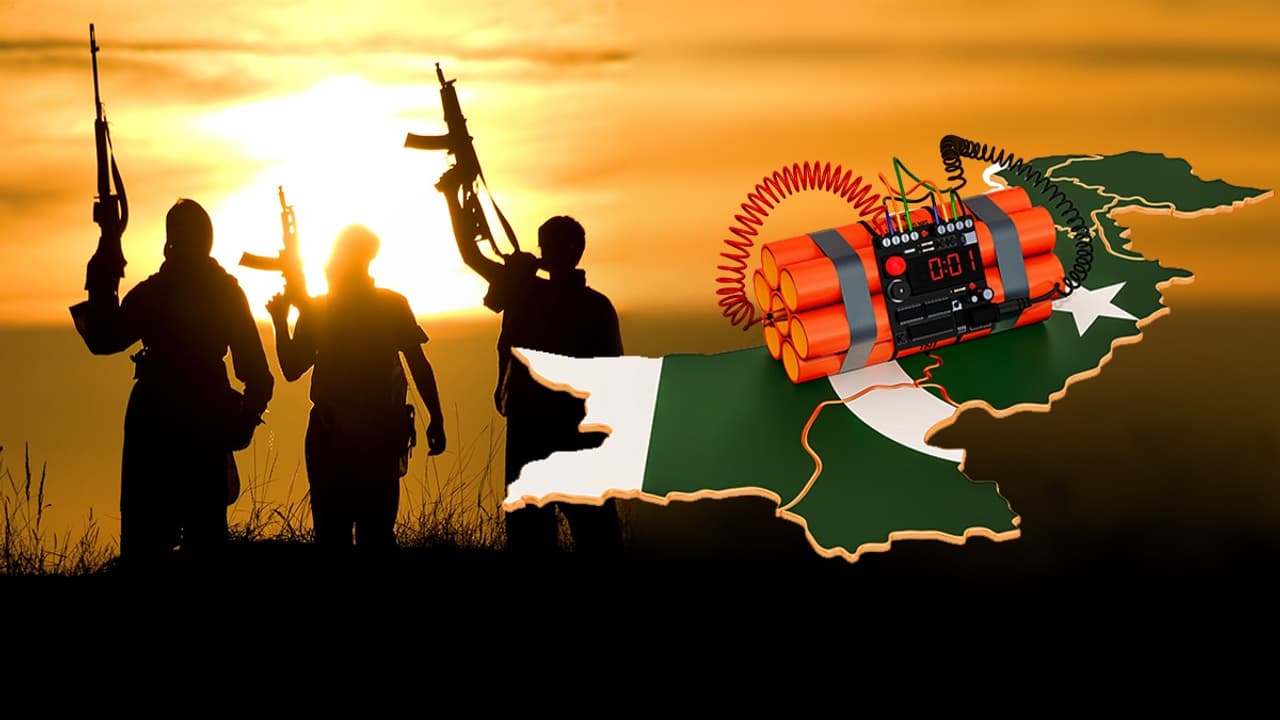Maj Gen Sudhakar Jee (Retd) warns that ISI is building “homegrown” and “white-collar” terror networks in India, using hybrid warfare to target the economy, infrastructure and key institutions, especially in Bengal due to its proximity to Bangladesh.
New Delhi: A week after a devastating car blast near the Red Fort jolted the national capital, killing 12 people and injuring 32, India’s counterterrorism apparatus is confronting an unsettling reality: the country may be entering a new era of terrorism—one that is quieter, harder to detect, and far more sophisticated than traditional insurgency networks.
As investigators stitch together clues from the Red Fort explosion, the subsequent blast inside a Jammu & Kashmir police station, and a suspicious explosive recovery operation in Haryana’s Faridabad, a troubling pattern is emerging. The threads, officials say, all point toward a deeper, coordinated effort by Pakistan’s ISI and its proxies to build “homegrown” and “white-collar” terror modules operating from within India’s social, economic, and technological fabric.
And this time, the enemy is not lurking in remote hills or border safe houses—but possibly within cities, institutions, digital networks, and highly skilled civilian spheres.
A Nation on Edge: From Delhi’s Heart to J&K’s Barracks
For many in Delhi, the Red Fort blast struck a nerve. The 17th-century Mughal monument, a symbol of India’s freedom, draws thousands of visitors daily. On Independence Day, it becomes the stage from which prime ministers address the nation.
That this iconic space was targeted has deepened public anxiety.
Just as the country was absorbing the shock, another explosion erupted—inside a police station in J&K—during the handling of an explosive sample linked to the Faridabad recovery case. What began as a Delhi-centric investigation has now sprawled across at least three states.
On Tuesday, the National Investigation Agency (NIA) arrested a man believed to be linked to the suicide bomber responsible for the Red Fort blast. Officials described it as a “critical breakthrough,” but they also admitted something more complex is unfolding.
‘ISI and Its Proxies Are Developing Homegrown, White-Collar Terror Networks’
Security affairs expert Major General Sudhakar Jee (Retd), who has tracked cross-border terrorism for decades, believes India is confronting a hybrid threat—one that merges digital sophistication, civilian invisibility, and foreign subversion.
His assessment is stark.
“ISI and its proxies have been putting all out efforts in developing ‘Home-grown’ and ‘White-collar’ terror networks with hybrid capabilities in India by handlers from across the western ( Pakistan) and eastern borders (Bangladesh).”
The Bengal Alarm: A New Frontier of Vulnerability
One of Major General Jee’s biggest concerns lies hundreds of kilometres away from Delhi—in West Bengal. Given its long and porous border with Bangladesh, he believes the state may be particularly vulnerable.
He warns:
Terrorists might target “monuments and institutions in West Bengal, since its proximity to Bangladesh.”
The reason: “the ISI and LeT have already expanded its networks in Bangladesh, especially in the areas bordering with India.”
The New Playbook: Hybrid Warfare Without Warning
Major General Jee argues that future attacks may not resemble conventional terrorism at all.
The target, he says, “will be predominated by multi-domain unconventional/hybrid/irregular components of warfare to unleash mass destruction without getting noticed by law enforcement agencies.”
When asked about the core motive, Major General Jee does not mince words.
“It is aimed to disrupt India’s progress and delay it from becoming a global power as late as possible by multiple means of destabilisation.”
He lists the intended targets:
- India’s economy
- Infrastructure
- Connectivity and transport networks
- Technological advancements
- India’s demographic dividend
And above all, he says, the strategy seeks to “raise the cost of security”—forcing India to stretch resources, weaken internal confidence, and derail its global ambitions.
A Way Forward: Strategic Patience With Precision
Major General Jee believes that India must respond with clarity, discipline, and technological superiority—not impulsive retaliation.
He recommends a national overhaul of information warfare and intelligence doctrine.
He urges the government to adopt “a formal and official structure of information warfare with offensive and defensive capability and deploy them for effect.”
His second prescription is even more pointed.
The government, he says, should apply “Strategic Patience”, wait for “clear battle indicators”, develop “sharp, unambiguous and accurate intelligence”, prioritise targets “even if on the soil of countries other than our traditional adversaries” and “punish them with precision accuracy even Beyond Visual Range (BVR) to destroy.”
A Terror Threat Evolving Faster Than India Realised
The Red Fort blast, the Faridabad explosives trail, and the J&K police station detonation are not isolated incidents. Together, they may represent the contours of a sophisticated ecosystem—one that blends domestic recruits with overseas handlers.
What India faces now is not the terrorism of the 1990s or early 2000s. It is something subtler, more intelligent, and potentially far more destabilising.
As investigators fan out across three states, and as NIA deepens its probe, one thing is becoming clear: India’s next security battle may be fought not just on borders—but within its cities, campuses, institutions, and digital spaces.
